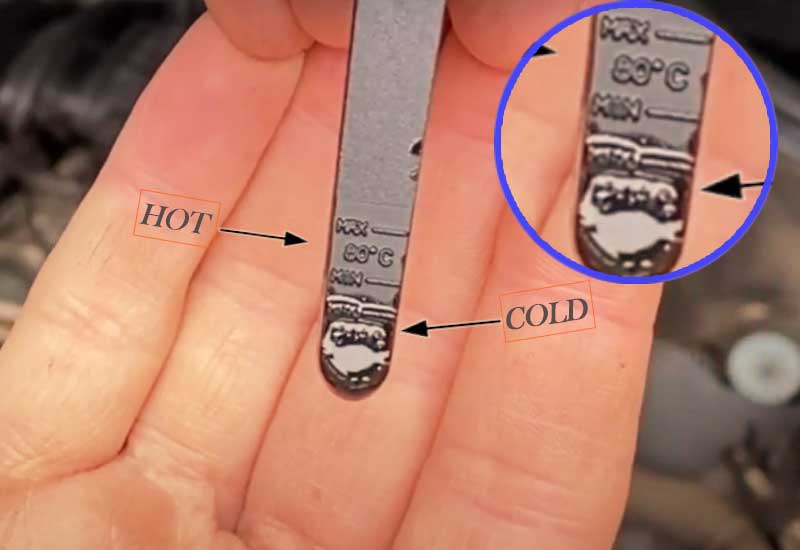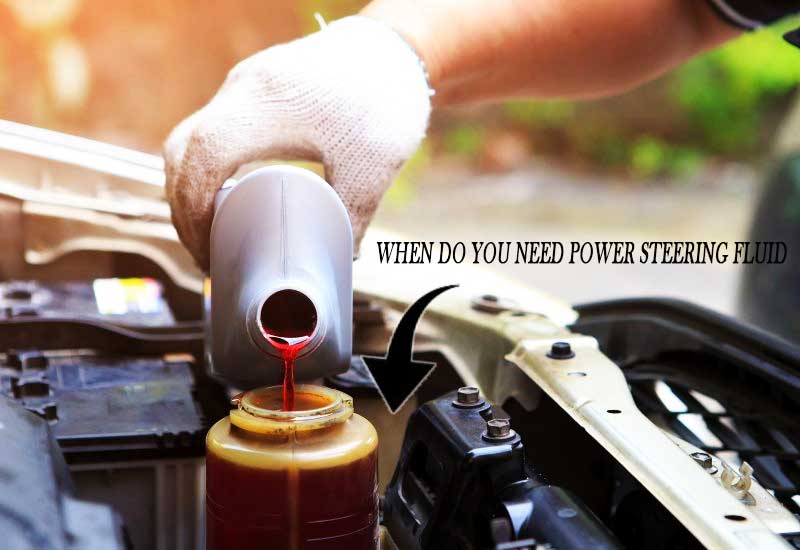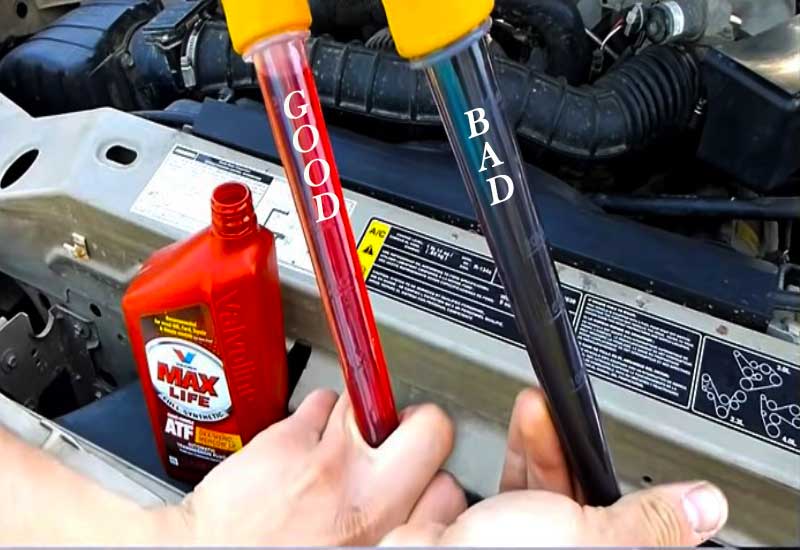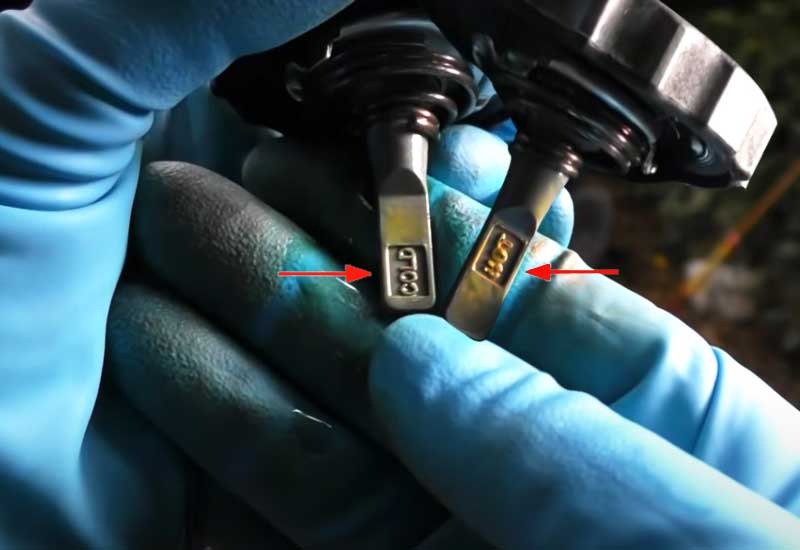Check Power Steering Fluid Hot or Cold!
The temperature of steering oil is pretty important to note. Because a bad temperature can cause a lot of trouble. That trouble can be in terms of damaging the pump or gear seals. The steering hoses can also get affected by the high temperature. Eventually, it will lead to a higher maintenance cost. Thus, you should check the indications timely to find the remedy.

In this article, I will take you over to the various techniques to check the temperature of the power steering fluid to know whether it is hot or cold. I will also try to add other relevant information to help you understand better.
Unsafe Temperature Threshold
The temperature above which the oil can cause damage and cause maintenance problems is 120℃.
What Can Cause High Fluid Temperature?
Let’s first talk about the reasons behind high fluid temperature. This is pretty important in doing the root cause analysis. If you do not know the reason, you can not reach a permanent solution. Here are the causes behind high fluid temperature.
Pump Specification: An incorrect pump specification can lead to high pump temperature.
Steering Gears: If the steering gears are worn or damaged, then there is a great chance of high fluid temperature.
Kingpins: If the kingpins of the steering mechanism are poorly maintained, then it can lead to high power steering fluid temperature.
Now, if once you know about the causes, it is time to get to know about the checking methodology as well.
Method 1: Dipstick
The cap of the power steering has a hot and cold indicator on the dipstick. That means you can read the temperature range by looking at the dipstick. But for that, you should know how to read it.
- Follow the steps below to know about the whole procedure:
- First off, you have to turn the engine ON. After that, let it reach the normal operating temperature.
- Remember that the engine coolant temperature gauge will show the reading of the normal area between H and C.
- During the idling of the engine, turn the steering wheel of your car left and right several times.
- Once done, turn the engine off.
Now, check the fluid level on the dipstick. It should be between the arrows in the FULL range on the side of the dipstick with MAX written on it. The top position is for HOT. If the level is in this range, you should not add further fluid.
If you find a low fluid level, that means you should add fluid to fulfill. Add the fluid in small amounts. Keep checking continuously to see if it has reached the range of FULL.
Once done, put the dipstick back into the reservoir.
Thus, you can see that it is pretty easy to understand the steering fluid of hot or cold this way. But it is not the only method on the list. There are other solutions as well to help you out in this situation.
Method 2: Thermindex
There is a product available on the market to make your life easier and tell you about the excessive temperature of the steering fluid. So, if you have a suspicion of excessive temperature, then this product can be of great purpose.
First, let’s understand Thermindex. So, it is a temperature-sensitive adhesive label that has a series of silver dots over it. These dots turn black when the predetermined temperature is reached. How cool is that?!
- Thermindex labels can be used in engine sumps, diff housings, transmissions, alternators, and wherever you want to notice the extreme temperatures.
- To have an idea about the model of these labels, you can start with the Series 4M D 99℃ to 116℃ and Series 4M C 77℃ to 93℃. You can find these labels online as well as on the market.
- The following procedure can help you in successfully carrying out the process.
- First of all, clean the reservoir properly with the help of a suitable cotton rag.
Now, take one Thermindex label and apply it to the reservoir.
After that, you have to run the vehicle in routine. You can wait for a week or two after applying the label. So, drive through this period.
After that time, check if the maximum temperature limit is achieved on the label. (Remember that if the contact is not firm, you will not have accurate readings)
If you see high-temperature dots filled, that means you have to do something about the equipment. Maybe the root cause needs maintenance. So, do it properly to resolve the issue.
Read Also: Power Steering Fluid Symbol & Indication
Do You Check Power Steering Fluid Hot or Cold?
There are some factors to consider before taking the reading of power steering fluid. First off, you should remember that this fluid expands when hot. Thus, the level will change eventually at a higher temperature. There are two points here:
- If you have not driven your vehicle in the past 8 hours, then you can use the ‘cold’ reading.
- If it is not the case, then you can take the ‘hot’ level reading.

When do you need power steering fluid!
Following is the list of indications when the power steering fluid is low generally.
- The steering wheel gets slower and makes a noise as well. This is an indication that something is wrong with the steering. But do not worry and just check the fluid level. It is highly likely that the level would be below.
- The power steering will eventually become jerky and jumpy. That means the steering system needs an inspection. Before going for the inspection, you should check whether the fluid level is alright or not.
- There can also be a leakage somewhere. Because when there is leakage, you will see stains and puddles under the vehicle. That indicates that the power steering fluid has gone low.
So, if you observe any of these indications, that means you should check the fluid level and refill it to restore.
Read if you want: How To Flush Power Steering Fluid in Toyota

Frequently Asked Questions
Here are some frequently asked questions to answer your general queries.
1. What is the recommended level of power steering fluid?
There is usually a range mentioned on the dipstick for MIN and MAX levels. If you find the fluid level in between these levels, you are good. If it is below the MIN level, you have to refill it according to the method mentioned.
2. What is a kingpin?
It is the main pivot in the steering mechanism of your vehicle. This part has a great role in the whole mechanism. If it is poorly maintained, it can lead to hot power steering fluid.
3. How to know if my power steering pump is bad?
Following are the indications for it:
- Your car will make a whining noise every time you turn the wheel.
- The response of your car’s wheel gets affected. It will get slower.
- The steering wheel will become stiffer than before.
- You will hear squealing noise while turning the ignition.
Along with all that, you may also hear groaning noises from your car. Thus, you should get the pump inspected.

4. Does it matter what power steering fluid you use?
Well, I would not suggest it. Because that can have consequences. You should go for the fluid that is suggested in the owner’s manual. Otherwise, the wrong fluid might damage the equipment and make your life difficult.
5. What happens if you use the wrong power steering fluid?
The wrong power steering fluid can affect the seals, damage the system, and even cause brake failure. These are some serious consequences that you should never compromise on. So, use the right fluid.
6. Do I check power steering fluid hot or cold?

Well, most of the manufacturers recommend that you should check the fluid while the engine is warm. If it is not warm, let it idle for some time or take around to do so.
7. What are the consequences of overheating power steering systems?
They reduce the life of the steering gear and pump seals. Moreover, the power steering hoses are prone to damage and they can cost money in the long run. If you observe such an issue, you should refer to some expert and get the problem resolved quickly.
8. Are bubbles in power steering fluid acceptable?
If you ever observe this scenario, get the system inspected because there might be some air leak that can cause more damage.
Wrapping Up
Power steering systems make life easier. But they can cause more trouble than manual systems sometimes. Like, if it gets bad and you do not have the remedy for it, it may bring bad consequences. So, you should take care of the system. Keep checking about the system if it is working well or not.
You can check the fluid level regularly and get the other parts of the assembly inspected. I have tried to thoroughly guide you about the aspects related to the subject. Please keep all the aspects in mind and you will never face any troubles. Keep your power steering system healthy and have a wonderful day!

